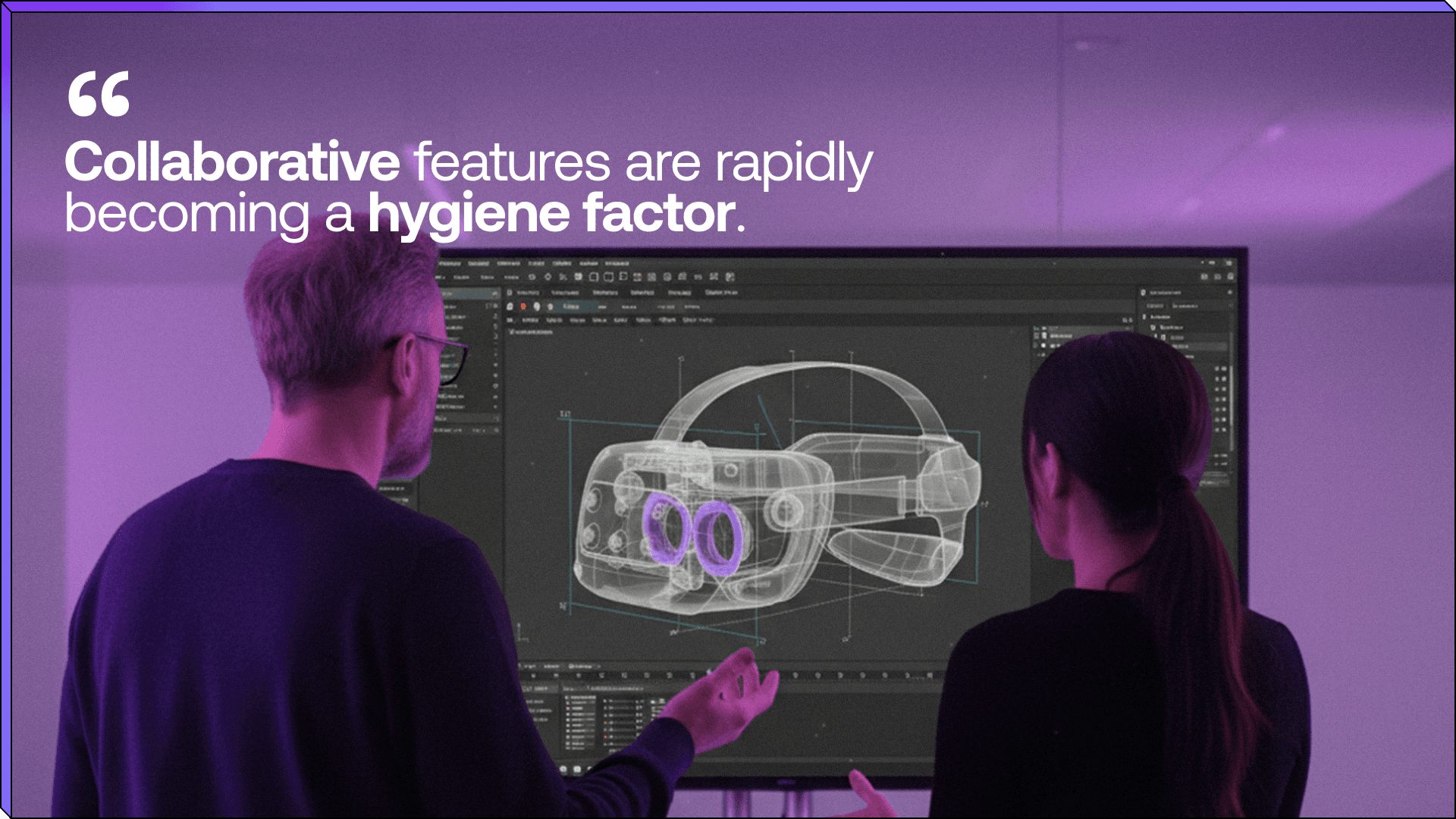Collaboration alone is not a moat
Hugo NordellCo-founder & CEO, Encube Technologies

In June 2014, a startup called Zeplin launched a cloud-based service that allowed user interface designers to share their designs with developers more easily. Back then, user interface designers relied on a variety of tools to produce design artifacts. From staples such as Photoshop and Illustrator, to relative newcomers like InVision and Sketch. The core idea behind Zeplin was that the handoff process between design and development teams was too painful. Designers lacked a meaningful way to share their designs and intentions with developers iteratively. Developers, in turn, felt that their input and feedback was requested too late in the design process. Version management was, simply put, a mess. This would leave teams frustrated, and forcing them to implement a user experience that didn’t live up to the original intention. Zeplin made it easy for designers to upload a design document, and invite developers and other stakeholders to provide feedback.
For a while, it seemed like Zeplin – and the bevy of other startups that quickly followed suit - would go on to define a new way of helping teams build software. All of which bet heavily on the killer user case being asynchronous collaboration on top of designs created using third party software.
In December 2015, another startup called Figma, launched in early preview. Figma took a different approach to collaboration compared to the design handoff tools that now sat between designers and developers. Figma’s philosophy was more akin to that of Google Docs. To embed collaboration deeply into the actual process of producing something, whether it be a design assets, a text document or a slide deck.
Over the next eight years, Figma would go on to replace many of the design tools themselves, such as Photoshop and Sketch, and fundamentally displace the category of design handoff tools led by Zeplin and Abstract. Today, Figma is valued at 20 BUSD, generates revenues in excess of 400 MUSD, and is estimated to be growing at more than 100% per year. By contrast, Zeplin and Abstract, two of the most successful handoff tools, are estimated to generate between 10 - 20 MUSD in revenues.
There are a number of lessons to be learned by looking at the rise and fall of design handoff tools specifically, and collaborative software more broadly, for hardware engineering R&D. The design review process in hardware R&D is conceptually similar to the handoff process employed by software development projects. A designer has a design intent that a developer must try to realize in code. Similarly, a mechanical design engineer has a design intent that a manufacturing engineer, or supplier, must try to realize in production. The easier it is to share and act on feedback, the more seamless the overall delivery process becomes.
Most, if not all, hardware design review tools are now making the same bet that the design handoff tools did back in the mid-2010s: that sharing design assets, typically CAD models and technical drawings, to collect team feedback is a strong enough use case to build user stickiness over time. At Encube, we don’t think this is enough.
Effective collaboration happens when there’s a distinct purpose underpinning it. Regardless of whether we’re referring to user interface, or hardware, design feedback, the best teams collaborate in order to converge on the best combination of form, fit and function necessary to deliver on a product or service promise. Being able to add a comment on top of a technical drawing, or on a 3D model directly, is absolutely a step up from static screenshots and PowerPoint slides to help spur the right kind of conversations. But it doesn’t build a moat. All of the content that users are building conversations around collaborating on is created elsewhere.
These conversations could move somewhere else. It is easier to add a good enough layer of collaboration to a must-have engineering tool, than it is to build a must-have engineering tool from a collaborative foundation. Because hardware, just like software, still makes it from idea to market without the use of handoff or design review tools. They can provide a competitive edge if applied correctly, but they aren’t indispensable.
An engineering tool that’s been fundamentally reimagined with collaboration as a foundational building block, however, can become indispensable. And when done right, it eliminates friction in ways that simply aren’t possible when collaboration is added as an afterthought on top of a user experience that was designed to be single player. This is why Figma won, while handoff tools like Zeplin or Abstract never truly took off, and what put a stop to the meteoric rise of Sketch.